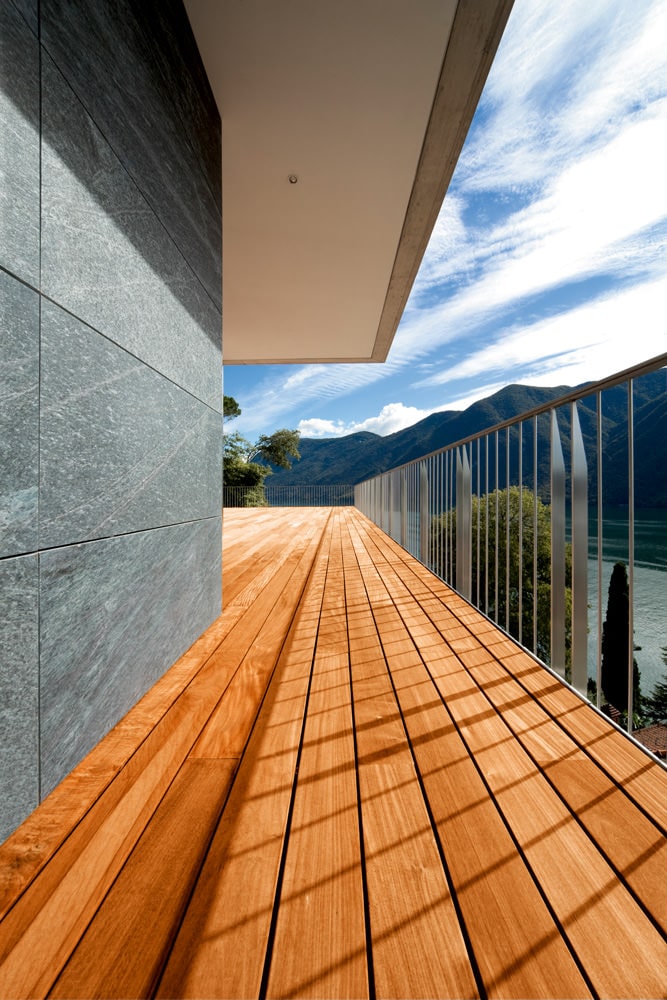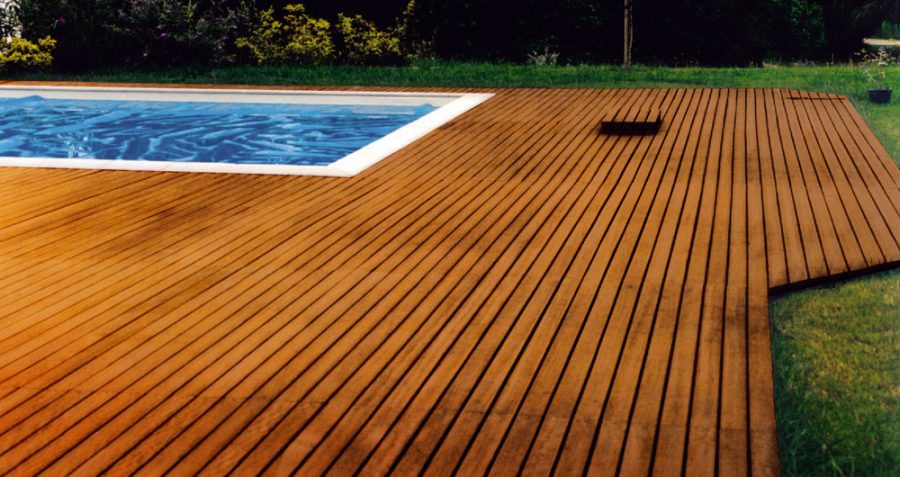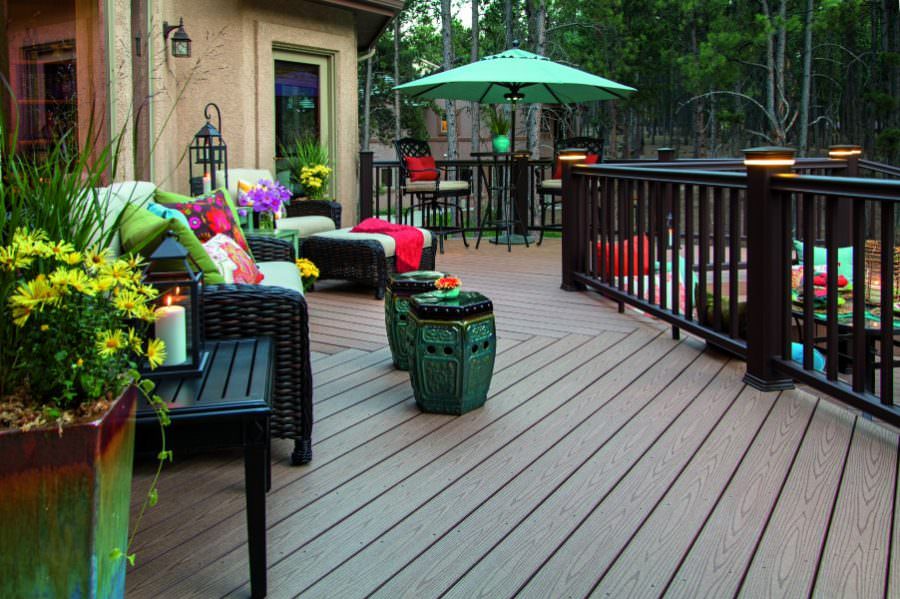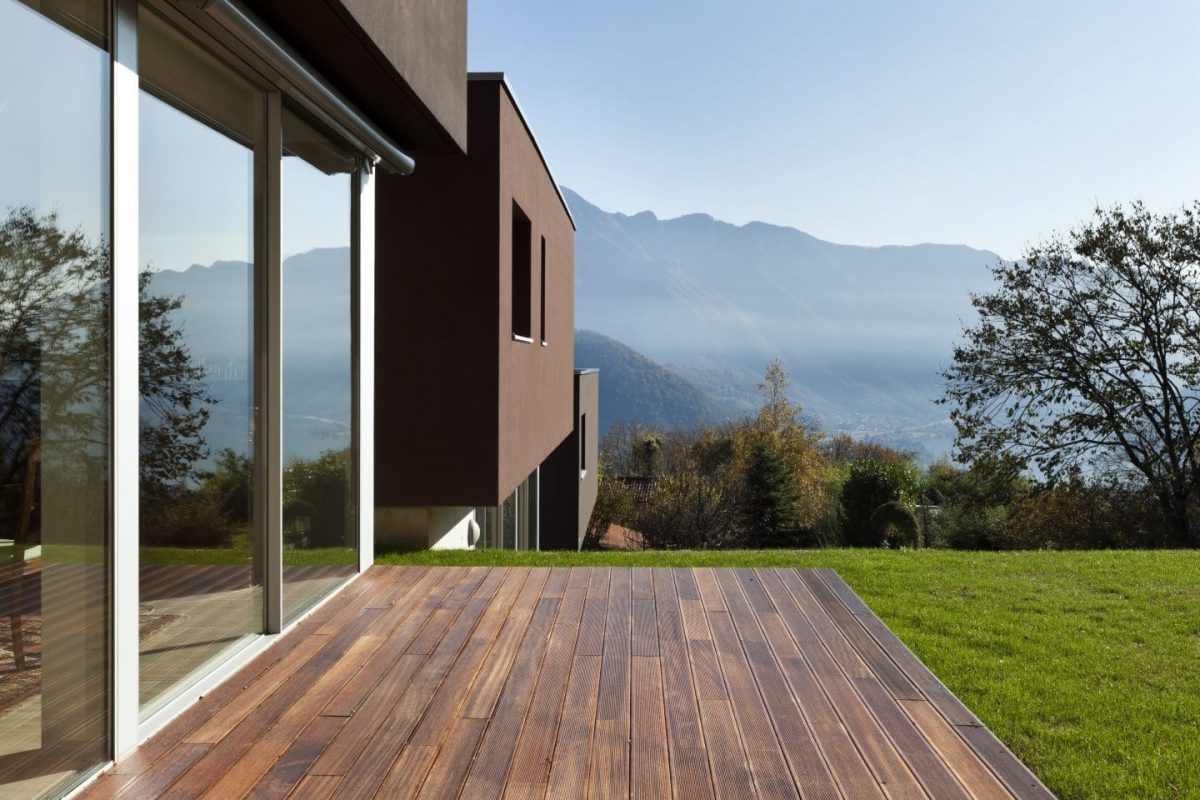A back garden deck is not only a functional addition to your home, but one that can add beauty and value to your property. Deciding to build a backyard deck requires a thorough thought process that involves designing your deck, choosing materials, actual construction, and maintenance of the finished deck. So, once you have decided that you want a deck for your garden, and planned out your design, the next step is to decide what type of material will suit your tastes. Read on to see the types of decking available.
Types of Decking Introduction
There are many different types of decking, so it is important to do your research and choose the best option for you and your family. Materials to choose from include: Plastic, composite, metal, or wood. Most homeowners opt for the traditional wood patio decks. No matter what wood you choose, it’s a good idea to purchase lumber from an FSC (Forest Stewardship Council) certified mill. The FSC makes sure all lumber has been harvested legally and is sustainable. Choices available for wood decks range from the inexpensive pressure treated lumber, to exotic tropical hardwoods.
Most decking is constructed using pressure-treated softwoods, such as pine. The reason this choice is preferred, is the low initial cost, availability, and durability of pressure-treated softwoods. Softwood lumber is usually treated to prevent damage from insects, the elements, and general wear and tear. However, you may need to spend more in the long run, in order to maintain your softwood patio deck. In other words, while it is inexpensive and durable, to maintain a long life span, regular maintenance will be required. For example, southern yellow pine is often chosen as it’s a sustainable wood at a reasonable price. However, it requires regular cleaning and treatment to protect it from the elements, rot or insects, or it may warp and split over time.
Types of Decking: Natural Redwood & Cedar Decking
Softwoods such as redwood and cedar are another excellent choice for deck construction. Redwood and cedar softwoods are light and easy to seal and stain. Many people like to put cedar balls or chips in their dressers, as they ward off moths and other insects. The same refers to decking. Cedar offers not only a classic rustic look, but is naturally resistant to insect damage and the elements, due to the tannins and natural oils present in the wood. Thus, the price is reasonable, it easy to install and resilient. Redwood is a very familiar site seen on patios across the country. Not only for decking, but it’s also used to build outdoor furniture. As with cedar, redwood is durable and naturally resists insects, mould and rot. Both redwood and cedar will require a maintenance coating every 3 years in order to sustain their beauty and durability.
When choosing wood for your deck, give consideration to where the wood came from. Heartwood is the dark, dense wood that is within the centre of the tree, and considered by many to be ‘dead’, while sapwood is the ‘living’ lighter wood found on the outer edges of the tree. Heartwood is naturally resistant to rot and insects due to natural oils, and it is also more compact than sapwood. Sapwood is lighter in colour and does not have these preservative oils. When in the market for redwood lumber for your deck, check the label for “heartwood common”. “Heartwood common” has more heartwood than redwood lumber labelled “construction common”.

Types of Decking: Hardwood Decking
For those who love the look and finish of hardwood decking, you have a variety of woods to choose from, which include: Ipe, Tigerwood, Cumaru, Garapa, and Massaranduba. Most people in the market for a ‘high end’ deck, will usually choose these gorgeous hardwood’s. Hardwood’s create tough, durable and reliable decks that are resistant to elements, moulds, insects and decay. Not only that, once installed, hardwood decks require less maintenance than decks made from the softer woods. Hardwood’s have a disadvantage, in that they are more difficult to install than softwood, and are more expensive.

Deck Types:Composite Decking
Composite wood decks are an extrusion of wood fibres and recycled plastic. This is a tough material that can easily withstand the elements and will not decay, warp or collect stains. However, composite decks do tend to get very hot in the sun, so people will need to wear foot apparel while walking on the deck. Composite decks will not have the beauty of wood, but they are in a variety of colours. No finishing is necessary.

Deck Types: Metal Decking
Metal decks do not have the beauty of a natural wood deck, but metal does have some advantages. An aluminium deck needs no finishing, can handle the elements with ease, as well as have a very long life. The downside to installing a metal deck, is that it is very expensive.
It is extremely important that the homeowner be aware of the deck material. Whether you choose a cost efficient, pressure treated softwood such as pine, a premium hard wood such as ipe, plastic, composite or metal material, it’s important you follow the proper protocols for installation and maintenance. This ensures that you and your family enjoy many decades of fun in the sun, on your new outdoor patio deck.
Interested in finding out more about decking? Read our articles here:
- Restoring Decking with Owatrol
- Deck Paint Vs Deck Stain
- Restoring Weather Beaten Decking
- Anti Slip and Winter Decking
- How To Strip Decking
- Using Pressure Washers On Exterior Wood
And visit these Promain product categories:




